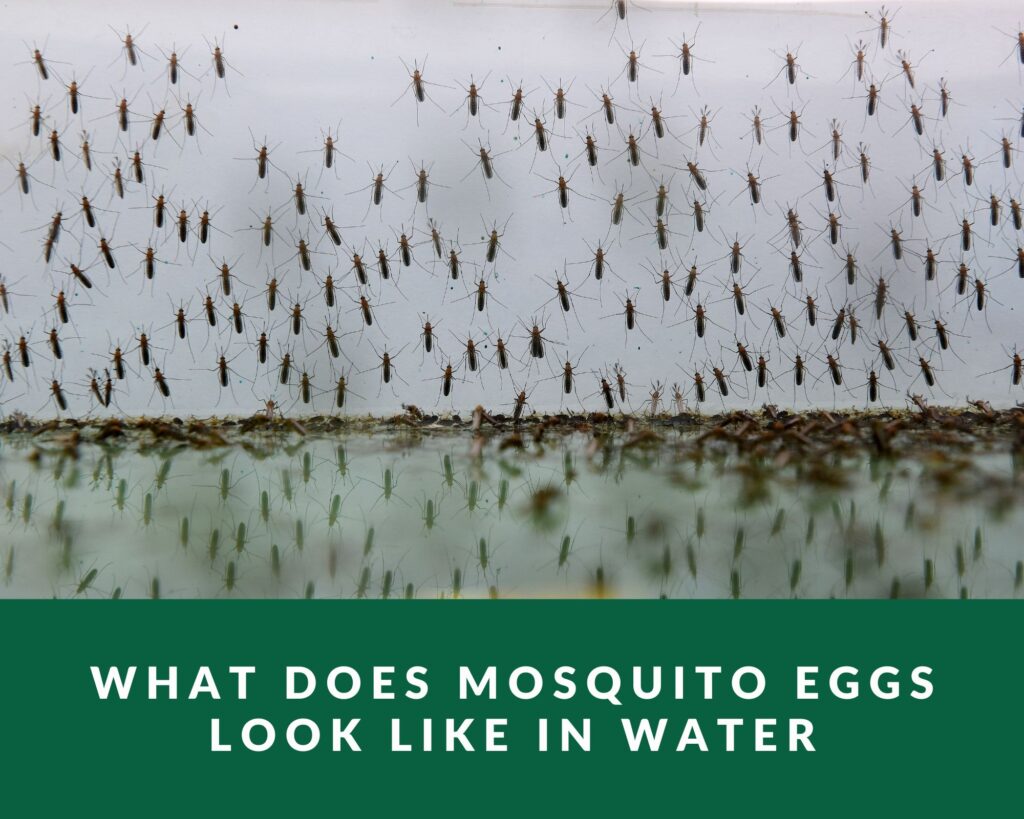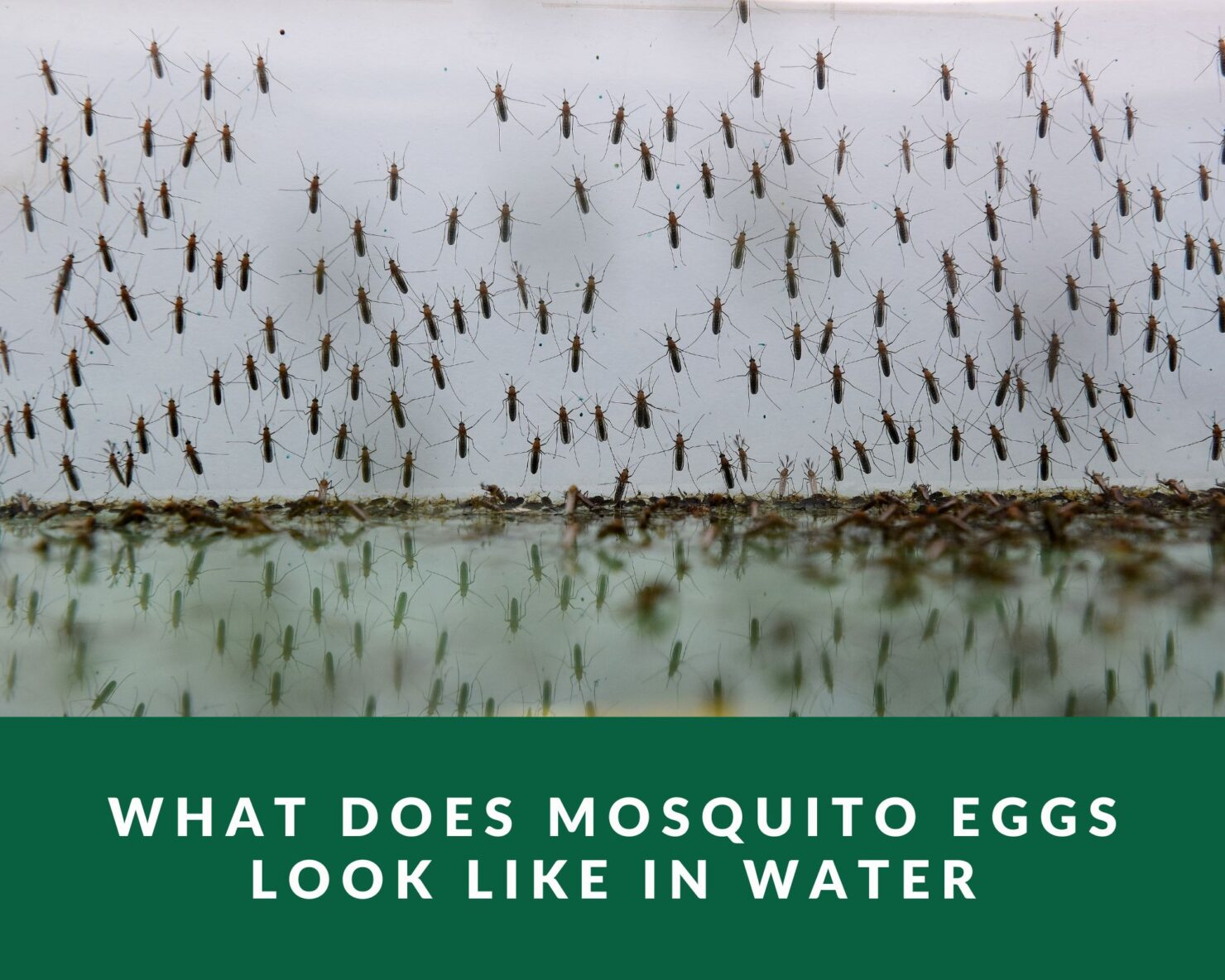
Since all life must begin somewhere, an egg serves as that beginning for mosquitoes. Our chances of reducing the mosquito population increase as we learn more about what mosquito eggs look like in water. Compared to us, mosquitoes have existed for a very long time.
Despite being a nuisance to us, they are useful to the ecosystem. They are a good source of feed for fish as well as other living things like birds and bats. Although we don’t want to completely remove them, we do want to improve control.
Can you see mosquito eggs in water?
In reality, mosquito eggs on the water cannot be seen. Mosquito eggs are very few. They merely have a 0.8 mm diameter. To see them, you would want a powerful magnifying lens or a microscope. It is extremely difficult, if not impossible, to see them with the naked eye when the water is blue and the pool floor is white.
Mosquitoes lay white eggs on the water’s surface when they lay their eggs. These eggs turn black after a day. Therefore, if you happen to be unlucky and your water pot is unclean and has been left unattended for weeks, you may observe tiny black groups of mosquito eggs hovering on the water’s surface.
What do mosquito eggs look like in water?
The mosquito eggs in water look like little, slender capsules when they are on the water’s surface. They have curled tops that have a milky, translucent appearance. The exterior of the eggs is very smooth and pearly glossy. Being perched on the river and softly swaying with its current gives them a mesmerizing, dreamy impression.
The eggs are quite tiny, only a few millimeters long. They frequently appear in clusters when they float in still water or puddles, giving the impression that they are small floating islands.
Development of mosquito eggs in water
Adult female mosquitoes lay mosquito eggs in tiny clusters on the surface of still water. The eggs are round in shape and have a glossy, smooth exterior. They are held together while they float on the water by a thin watery layer known as a raft.
The eggs can float on the water’s surface thanks to this raft. Given their distinctive look and ability to float on the water’s surface, mosquito eggs create the perfect habitat for growth.
The development of the eggs starts after they are laid. The embryo stage is the first stage of development when the eggs begin to hatch into tiny larvae. The larvae, often called wrigglers, are tiny, legless aquatic animals that move about. They can move by wiggling their body and have distinct heads and tails.
The larvae progress to the pupal stage as they get bigger. The larvae go through a transformation process at this stage, turning into adult mosquitoes. In addition to having a distinct head and tail, the pupae may float on the water’s surface.
When the pupae have finished their transformation into adult mosquitoes, they escape from the water. The cycle can then begin again when the adult mosquitoes are prepared to mate and lay their own eggs.
How mosquitoes survive winter
In tropical regions, mosquito activity is constant. When chilly weather arrives in temperate climates, several kinds of adult mosquitoes stop biting and go into hibernation to survive the winter.
It’s worth noting that not all mosquitoes survive the winter. In colder regions, particularly those with harsh winters, many mosquitoes do not survive the cold temperatures and other environmental conditions. However, even a small number of surviving mosquitoes can be enough to repopulate an area in the spring.
Ways to prevent mosquito breeding in water
The issue now is: have you removed the mosquito breeding sites from around your property given how quickly they reproduce? Here are practical methods to stop mosquito breeding on your property if you haven’t already in preparation for the rainy season:
- Get rid of any unnecessary objects or vessels that could gather rainfall.
- Eliminate standing water from plant rims or flower pot plates.
- Ensure that the water in the pool and fish pond is flowing.
- Fix any dripping valves and pipes.
- Cover the outside trash containers.
- Keep your gutters clear and flowing freely
- Clean out the pet’s outdoor water bowl.
Conclusion
The most crucial thing is that you act and stop any additional reproduction. Follow the preceding tips, and then keep performing comprehensive inspections of your home and yard. Find any potential breeding grounds for mosquito eggs and treat the area to prevent them from returning. You may prevent any oncoming invasions of these pests with a little tender loving care.
Other Related Articles

